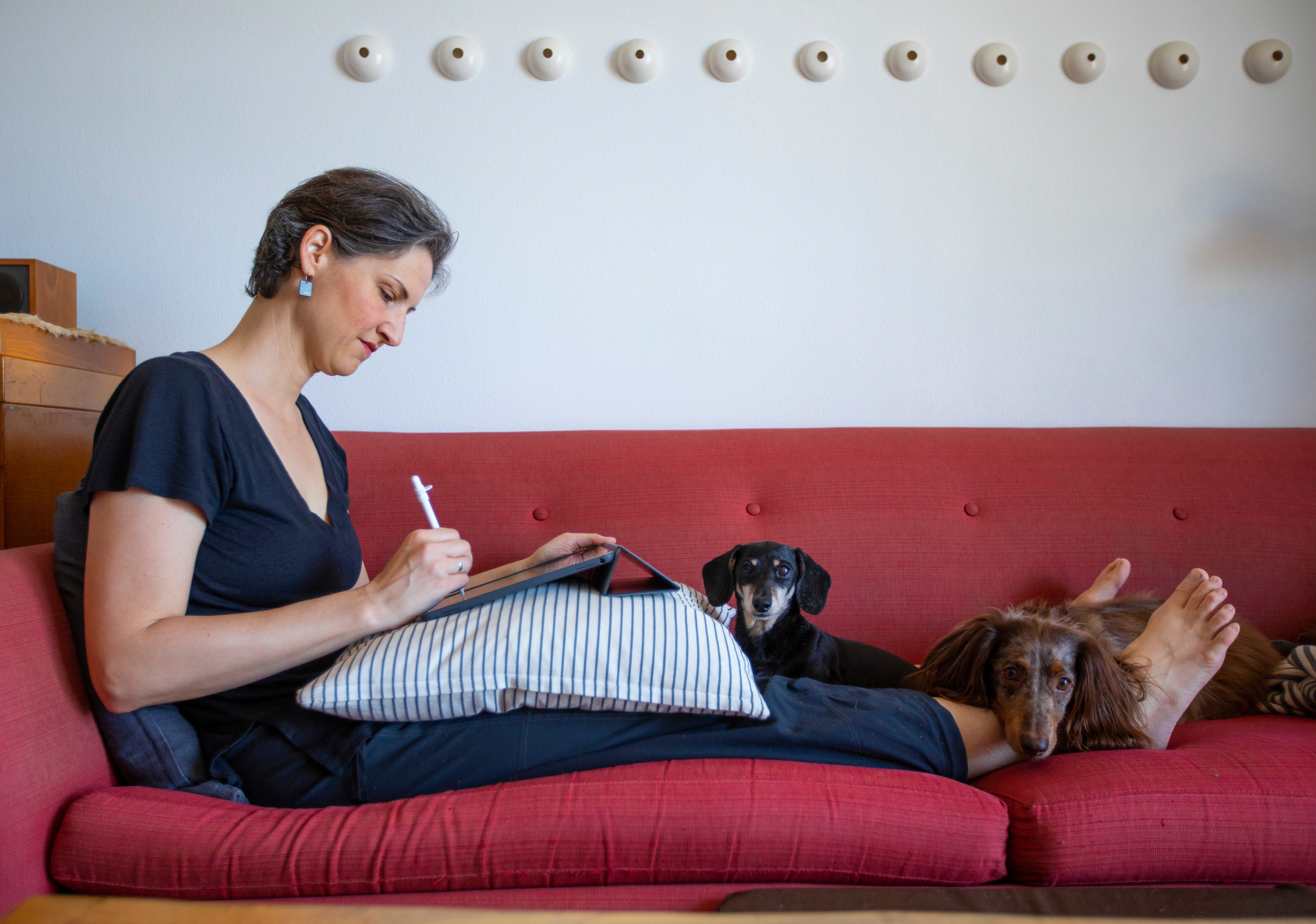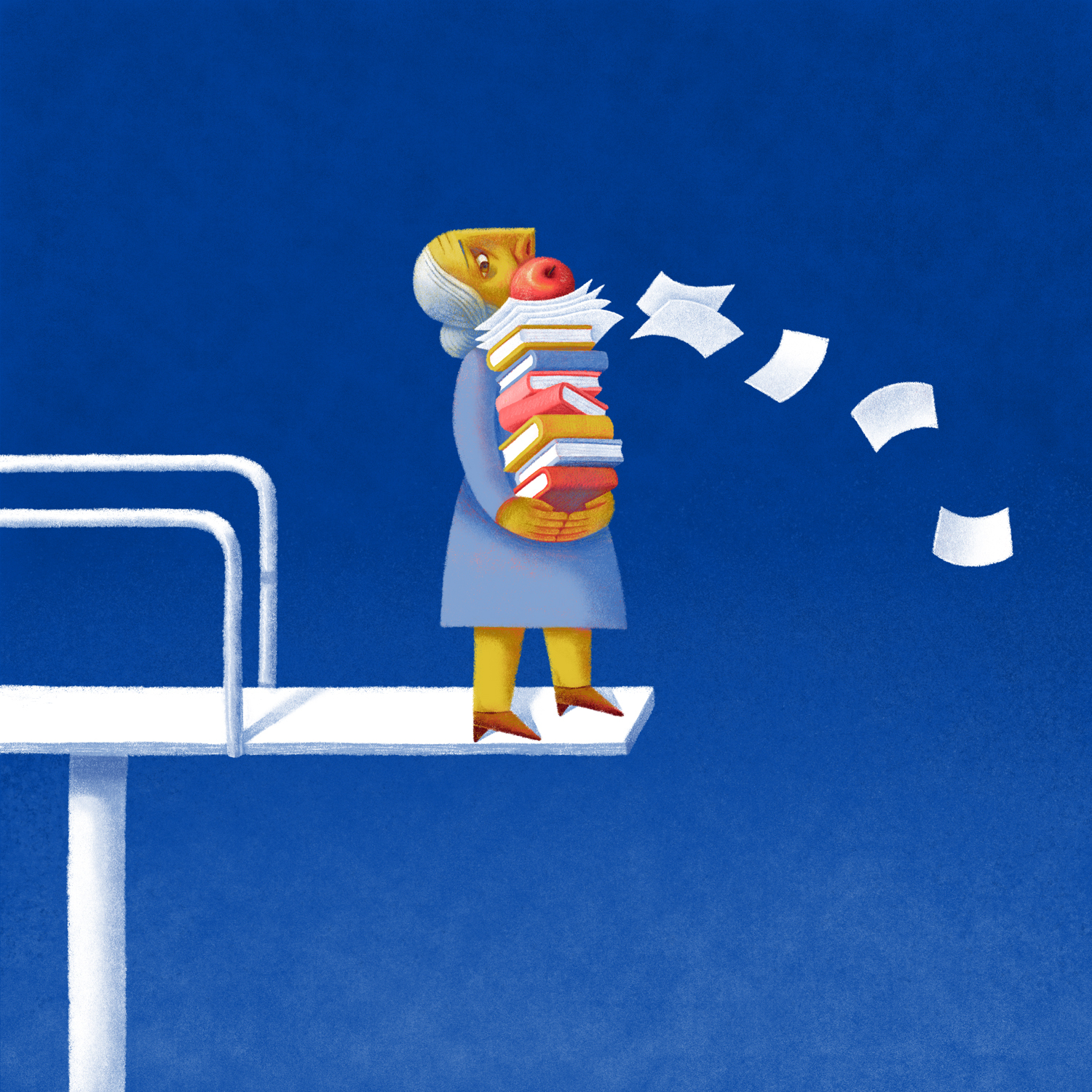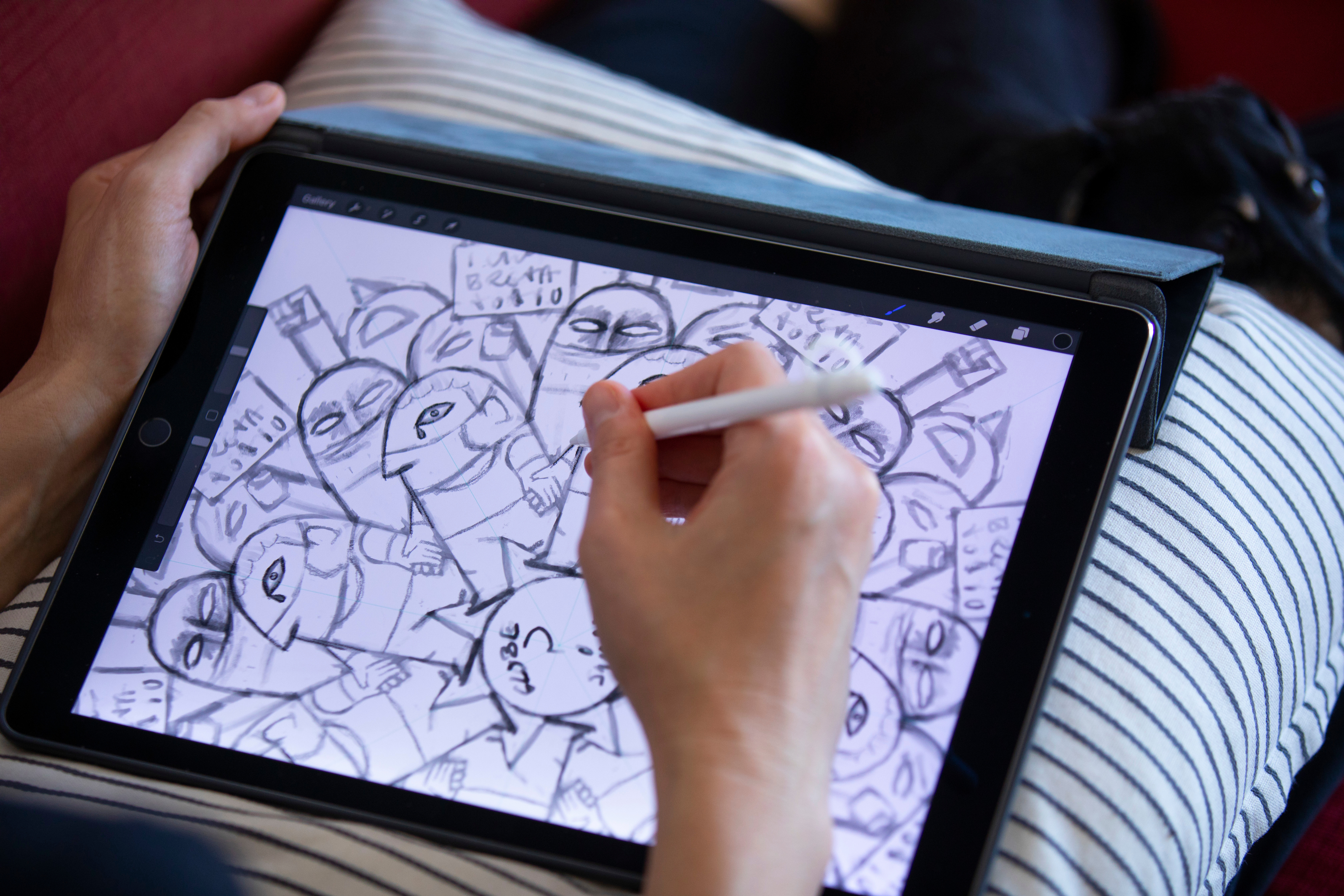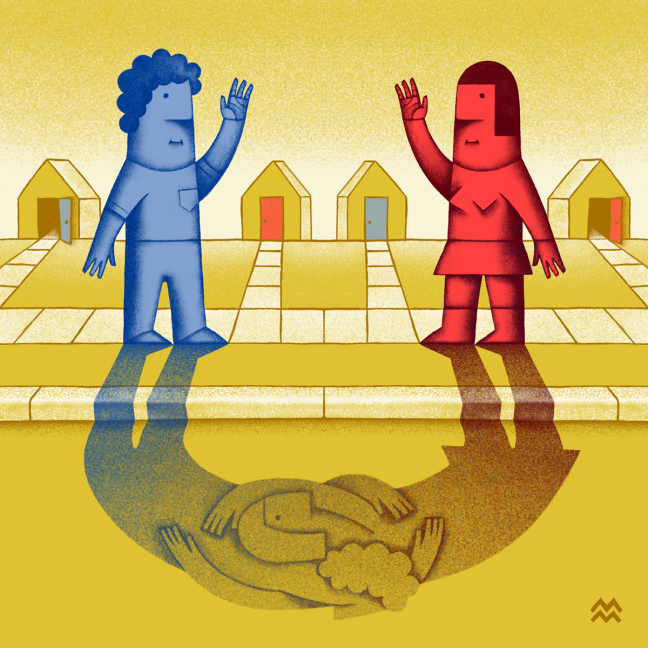
Illustrator Miriam Martincic works on a current design on her home sofa with her miniature dachshunds, Oona and Henri. Photo by Christopher Gannon. Larger image.
AMES, Iowa — In the way that some people process their experiences through writing, Miriam Martincic translates those experiences into images.
Martincic, assistant teaching professor of graphic design at Iowa State University, is working on a series of illustrations about the COVID-19 pandemic. Her drawings began after Iowa State moved spring coursework online and continued – with a few more ideas on deck.
“Making art is a way for me to process what’s happening in life – good or bad,” Martincic said. “It’s been such a crazy time. I feel the need to both engage with things directly and to create distance or perspective.”
In some of her drawings, that means capturing social distancing, honoring health care workers and showing what the transition online felt like for teachers. On the other hand, in order to create some distance, she recently created a series centering on her two dachshunds in the four seasons.
Finding meaning in image-making
Martincic says art’s power is important not only during times of uncertainty or strife, but all the time.
“My interest has always been not ‘What does it mean to make images in uncertain times?’ but, ‘What does it mean to make images, period?’” she said. “What’s most important to me is to be a conscious image-maker. I want everything I put in an image to be a choice. It’s really easy to internalize and repeat bias.”
That’s why the people in her images tend to be orange, yellow and blue.

This illustration, "Deep End," shows how
educators dove into online learning once
in-person coursework was suspended
for the spring semester. Illustration
provided.
“My characters look like people, but people don’t look like that. Stylization allows me to shift from representing visual reality to representing ideas and feelings,” she said.
Martincic says even skillful illustrations too often reinforce stereotypical expectations of race and body image.
“The medium of image is appearance, and the danger of appearance is that it can be mistaken for reality,” she said. “Images can unintentionally normalize limited gender roles, privilege skin color, or reinforce conventions of beauty that do not represent or value our diversity. The exciting thing is that understanding the pitfalls of image-making gives us precisely the knowledge we need to create and consume images with skill.”
Martincic teaches Iowa State students with these values in mind.
“As an educator, the value of learning to make images is not necessarily to become a professional illustrator or artist, but to become more visually literate,” she said. “That means learning to be more conscious and to question assumptions. It’s one thing to eat a great meal; it’s another to cook a great meal. Learning about how to make images makes you a smarter visual eater.”
A different way to connect, understand
She sees her pandemic series as “powerful visual headlines.”
“I’m grateful I can contribute in any small way,” she said. “For me, it’s such a natural thing to put my experiences and thoughts into an image. Since I’m not a writer, when I read what somebody else has written, I feel connected to the person who wrote it and more connected to myself. Somebody has put into words what I’m feeling. What I do is put those feelings into pictures.”
Martincic draws on her iPad. Ten years ago, she went from being a fine art teacher and gallery artist to a graphic designer. That meant she had a more traditional work schedule, less time to devote to her time-consuming practice using rapidograph pens and gouache paint. With digital drawings, she found a way to work for short bursts of time.

Miriam Martincic works on a current design on
her home sofa. Photo by Christopher Gannon.
Larger image.
“It’s an easy way to take the little bits of time you have and make them matter,” she said.
She hopes that her pandemic series helps people connect with each other and reflect on their shared experience over the past few months. Her illustrations also provide a way to add to or change the conversation around the topic that each addresses.
“Making images regarding the current public health crisis centers and grounds me personally. In uncertain time such as this, it’s easy to feel ‘nowhere,’” she said. “Grounding is an act of connecting to both yourself and to others.
“Each act of image-making on its own is not monumental, but altogether they reflect and shape our visual culture. The more diverse voices, the bigger our collective picture. It is a team effort in which I am privileged to be a player.”
